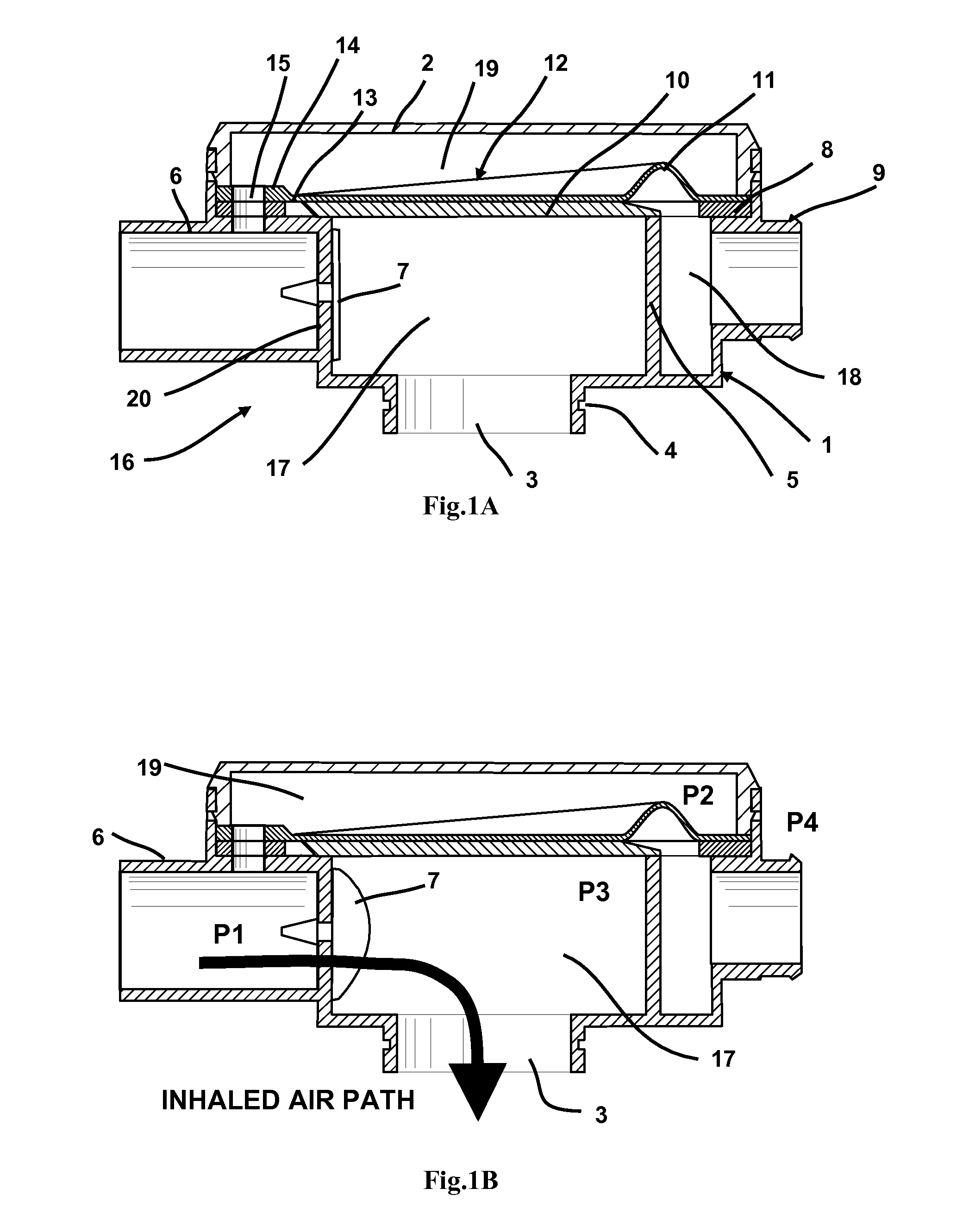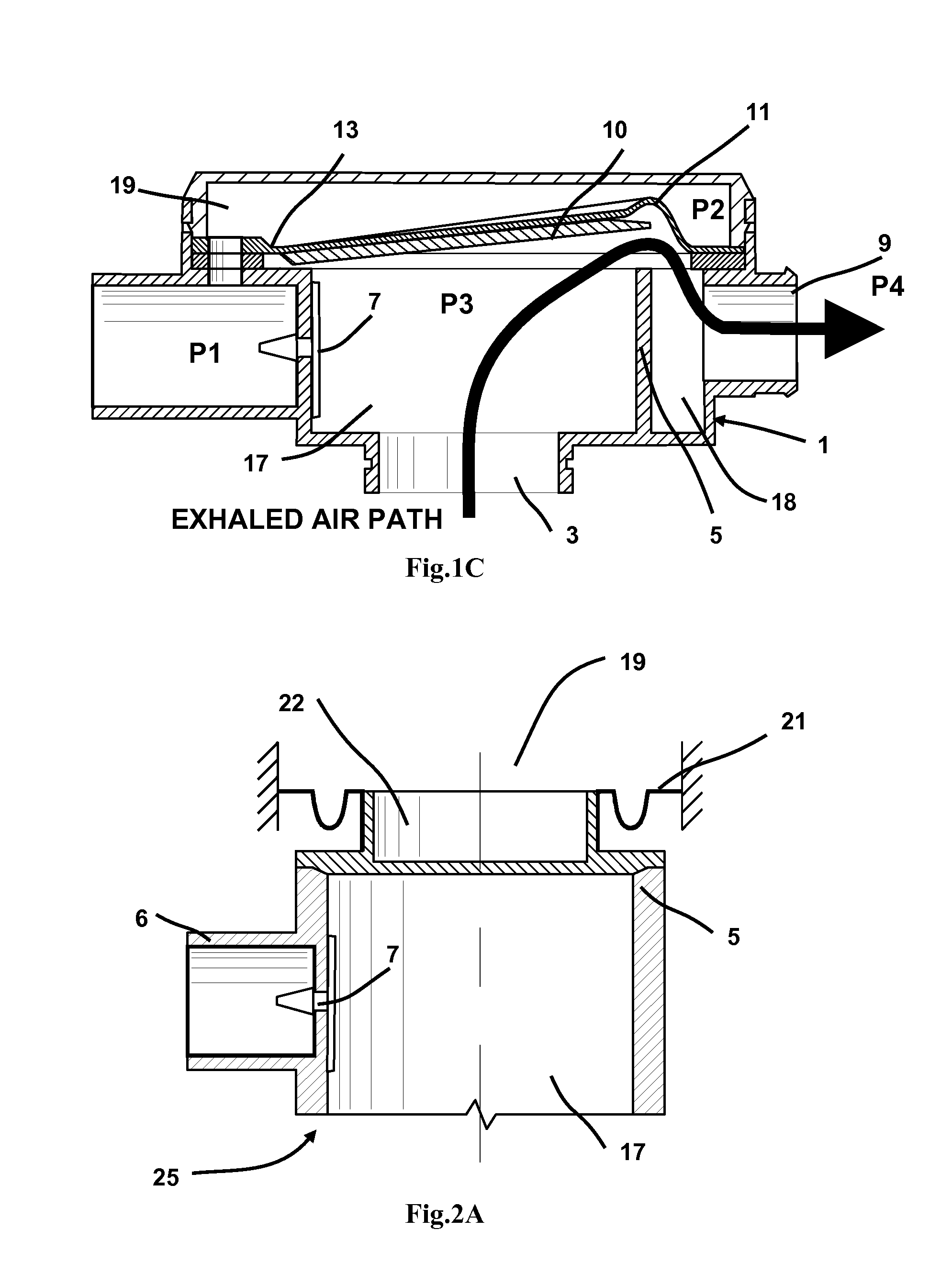Exhaust Apparatus For Use in Administering Positive Pressure Therapy Through the Nose or Mouth
a positive pressure therapy and exhaust pipe technology, applied in the field of exhaust pipe valves, can solve the problems of complex intubation and treatment failure, and achieve the effects of reducing source flow requirements, reducing treatment failure, and superior co2 removal
- Summary
- Abstract
- Description
- Claims
- Application Information
AI Technical Summary
Benefits of technology
Problems solved by technology
Method used
Image
Examples
Embodiment Construction
[0021]FIGS. 1A-1D illustrate a first embodiment of the invention. Referring to FIG. 1A, a valve assembly 16 comprises a rigid valve body 1 which includes an inlet passage 6 which is supplied with breathable gas under pressure. Inlet passage 6 terminates at an inner peripheral wall 5 where it intersects primary chamber 17. A non-return valve 7 is applied at the junction between the inlet passage 6 and the primary chamber 17. Non-return valve is attached to the rigid valve body 1. In the example shown, non-return valve 7 comprises a resilient flap weakly biased to the closed position and structured to deflect into two halves about a central line defined by mounting bar 20 which symmetrically bridges the junction between inlet passage 6 and primary chamber 17. Means of attachment comprising a barb-through-hole arrangement as widely used for this type of valve. It will be appreciated that the non-return valve 7 may take alternate forms such as a resilient flap weakly biased to the close...
PUM
 Login to View More
Login to View More Abstract
Description
Claims
Application Information
 Login to View More
Login to View More - R&D
- Intellectual Property
- Life Sciences
- Materials
- Tech Scout
- Unparalleled Data Quality
- Higher Quality Content
- 60% Fewer Hallucinations
Browse by: Latest US Patents, China's latest patents, Technical Efficacy Thesaurus, Application Domain, Technology Topic, Popular Technical Reports.
© 2025 PatSnap. All rights reserved.Legal|Privacy policy|Modern Slavery Act Transparency Statement|Sitemap|About US| Contact US: help@patsnap.com



